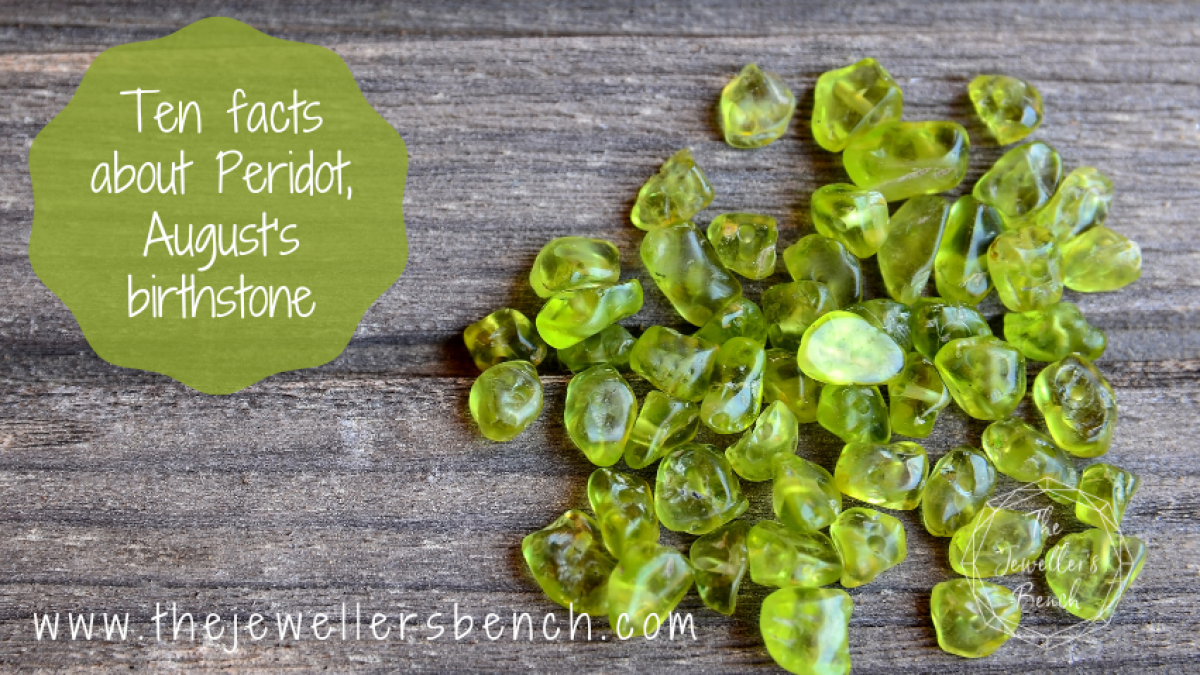Ten Facts about Peridot, August's birthstone

What is the relationship between peridot and volcanoes? FInd out here!
Beautiful fresh green Peridot is one of only two gemstones created deep inside the earth.
Read on to discover more...

1. Peridot is one of the few gems that occurs in only one colour, green, ranging from lime to olive. The intensity and tint of the green is determined by how much iron is present in the structure of the crystal.
2. Peridot is a gem-quality form of the mineral olivine. Olivine is commonly found, but gem quality peridot is quite rare.
3. Peridot is one of only two known gems to be created not in the earth's crust but deep inside the earth, in magma in the upper mantle, about 20 to 55 miles below the earth's surface. Tectonic activity brings it to the surface. The only other gem formed here is diamonds.
4. Peridot has also been found in some meteorites, making it one of the few gems known to exist outside of our solar system!

5. In ancient times, Egypt was the primary source of the peridot, called the ‘Gem of the Sun.' The Egyptians were extremely fascinated with the peridot, and they were made into talismans to ward off evil. Travellers to Egypt reported that Cleopatra wore fabulous emeralds as that was the green gemstone they were already familiar with - they were wrong as she wore peridot.
6. The value of peridot stones is determined by the three Cs: Colour, Carat and Clarity. Darker, purer green, larger and clear stones are the most valuable.
7. Egyptian scrolls found by modern archeologists indicate that the ancient Egyptian priests believed that the Peridot contained the forces of nature and used cups encrusted with this gemstone to achieve communion with their Nature Gods.
.

8. Although Peridot was made famous in Egypt, it can actually be found all around the world including the USA, Australia, Kenya, China, Brazil,
Myanmar, Pakistan, South Africa, Tanzania and Sri Lanka. Myanmar and Pakistan have some of the largest and finest quality stones.
9. In Hawaii, the stone is involved in ancient folklore and is said to symbolize the tears of the Goddess Pele, the goddess of volcanoes and fire.
10. Peridot can be cut into cabochons, beads and faceted stones, making it very versatile (and beautiful!) for jewellery making.
11. And a lastly bonus fact for you...the largest cut peridot weighs a whopping 311.78 carats (62.35 grams). The raw gemstone was found on Zagbargad Island, Egypt, and is now located in the Smithsonian Museums.
Want to find out more about using gemstones in your jewellery?
Here are some useful blog posts and tutorials.
Categories: : birthstones, did you know, jewellery facts

Joanne Tinley
Tutor and Founder of The Jeweller's Bench
The Jeweller's Bench is run by Joanne Tinley. She has been making her own jewellery for as long as she can remember and left her first career as a school teacher to set up business as a jewellery designer and tutor nearly 20 years ago. She is
self-taught and like many people started with wire and beads. Learning how to solder, however, opened up a whole new world of jewellery making, one that she is keen to share!
 Joanne Tinley
Joanne Tinley 



